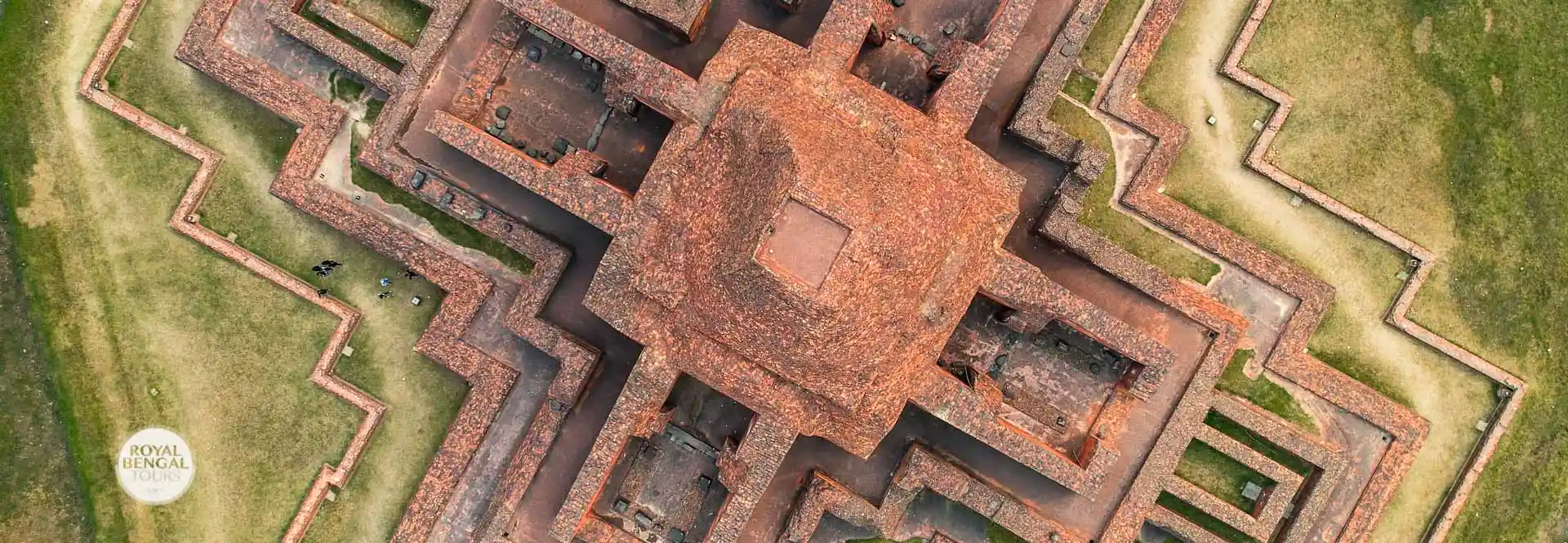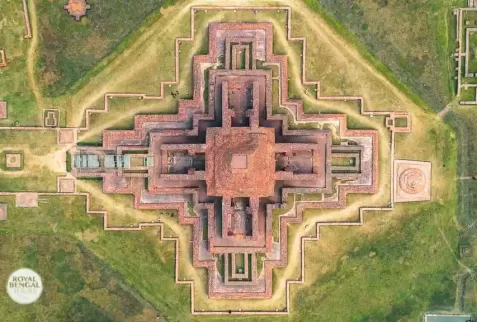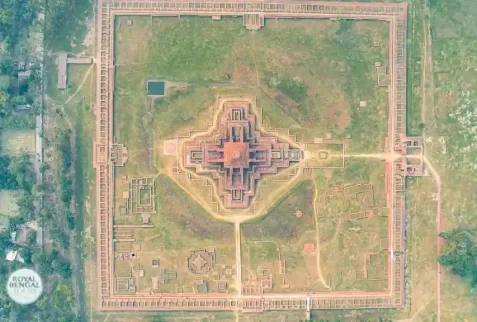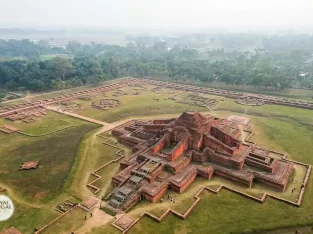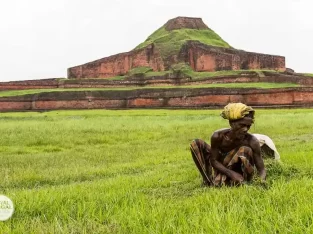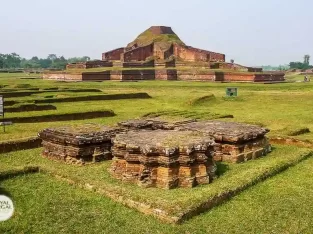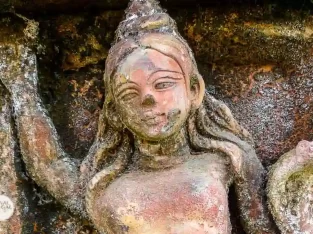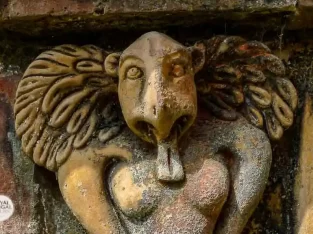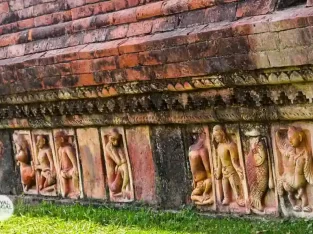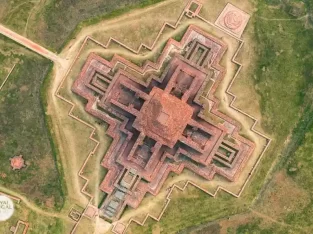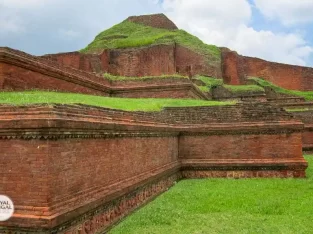Your cart is currently empty!
The most spectacular of all ancient universities in Bangladesh was the monastery at Paharpur located in the district of Naogaon. A clay seal inscription led to its identification as the great Somapura Vihara built by the great Pala emperor Dharmapala in around the year 800 AD. Until the excavation of the Vikramasheela Mahavihara in 1973, it was considered the biggest Vihara in the whole of South Asia. It measures 922 feet north-south and 919 feet east-west, only three feet short of a perfect square. Laid out on a vast 22 acre courtyard, it has its main entrance on the north with ancillary buildings, votive stupas and minor chapels – all overlooking a huge pyramidal temple in the centre. This stupendous structure has three receding terraces before it reaches even in its ruins a lofty height of 72 feet.

